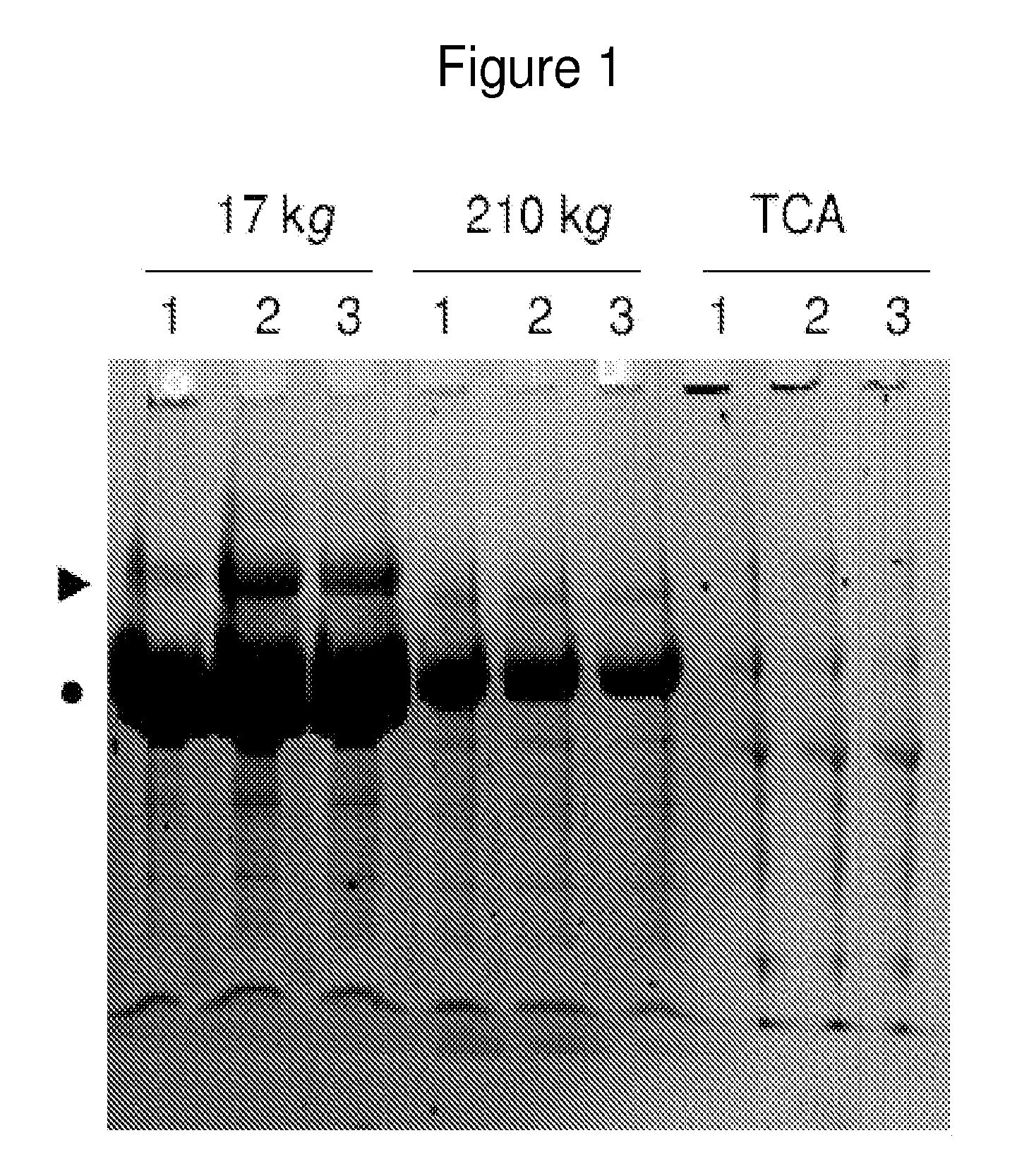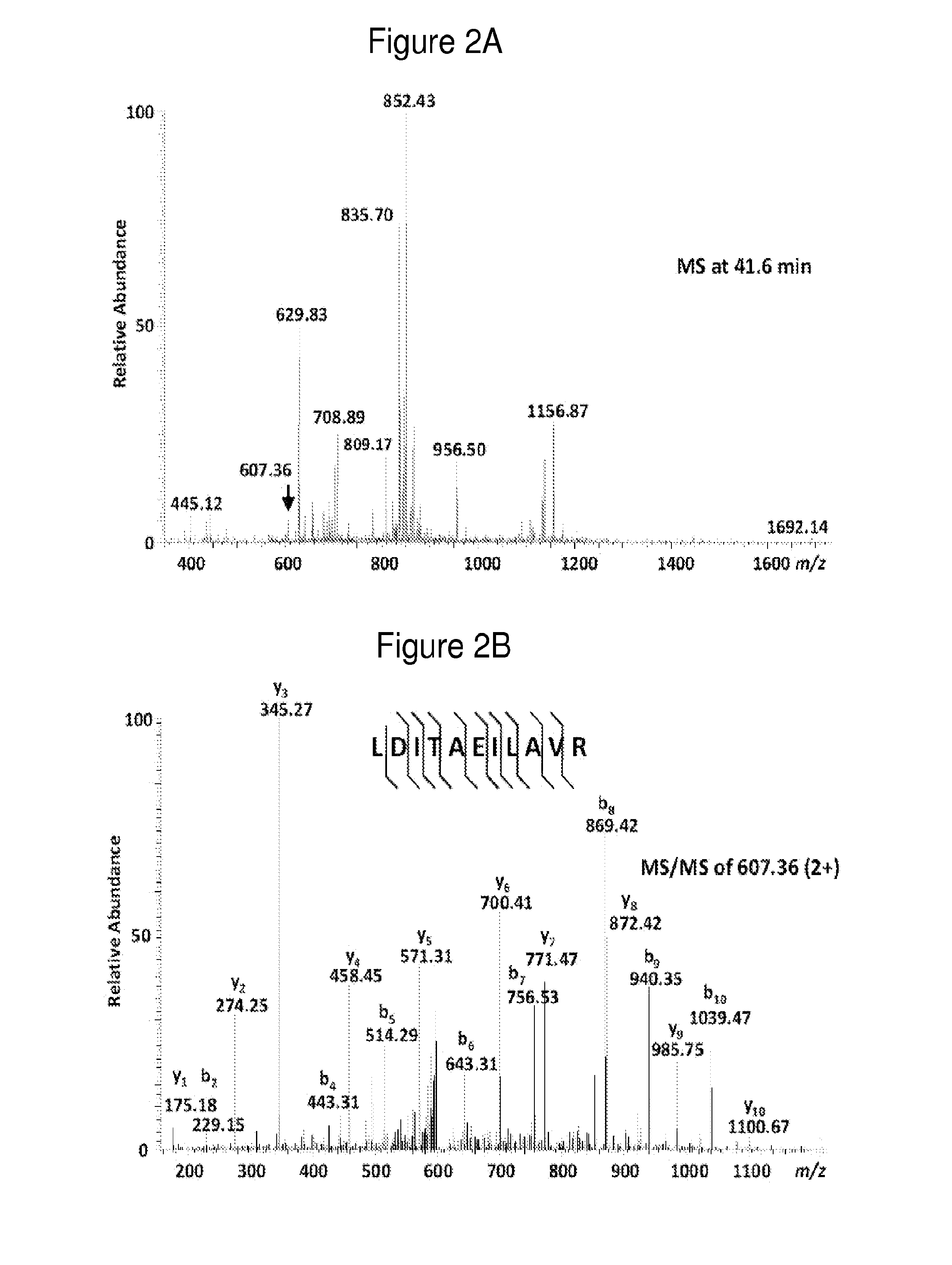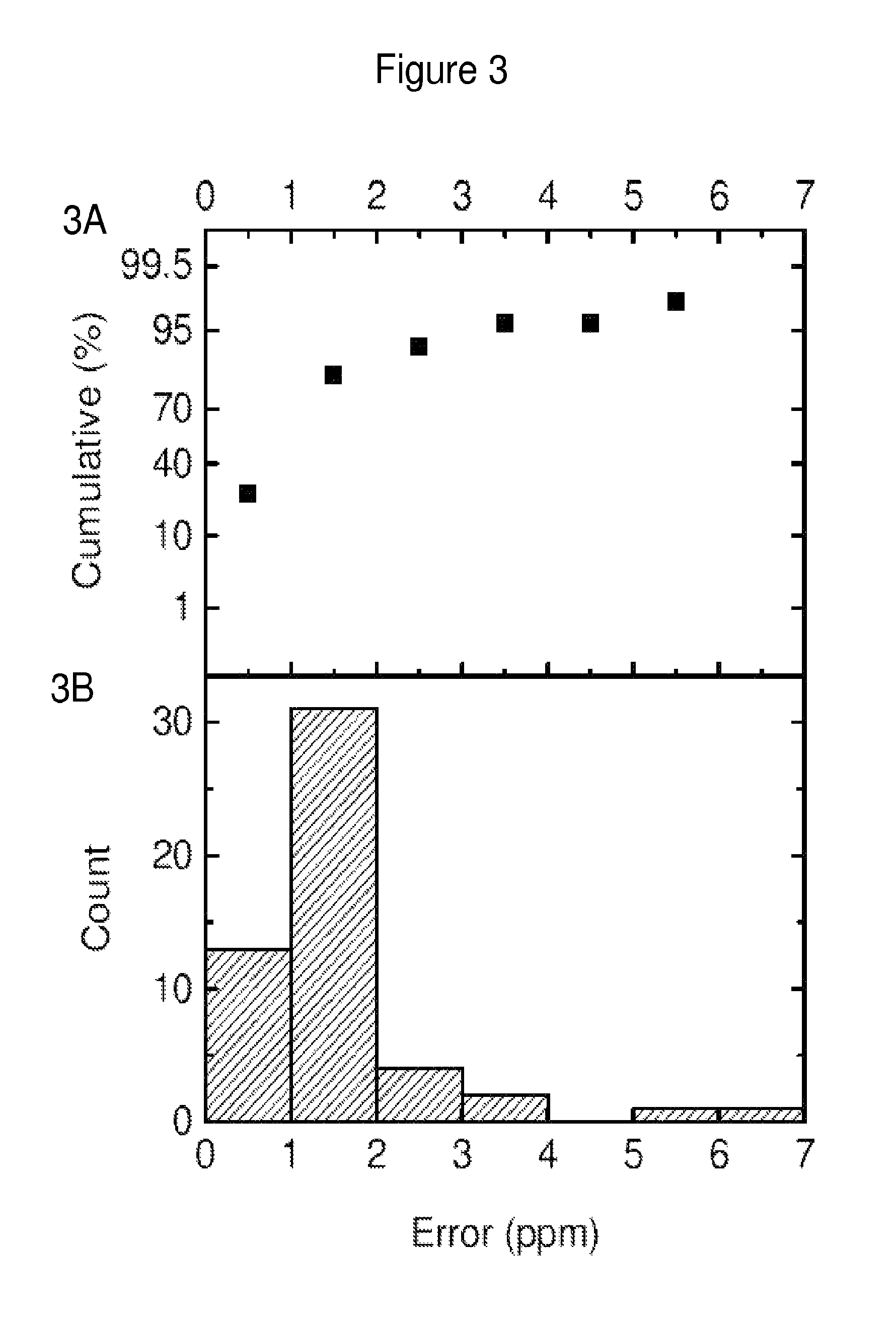Method of predicting acute appendicitis
a technology of appendicitis and appendicitis, applied in the field of acute appendicitis prediction, can solve the problems of high mortality, complicated diagnosis, and additional challenges in the accuracy of initial diagnosis
- Summary
- Abstract
- Description
- Claims
- Application Information
AI Technical Summary
Benefits of technology
Problems solved by technology
Method used
Image
Examples
example 1
Materials and Methods for Example 1
[0315]Sample Collection.
[0316]Urine was collected as clean catch, mid stream specimens as part of routine evaluation of 12 children and young adults (ages 1-18 years, median 11) presenting with acute abdominal pain in the Children's Hospital Boston's Emergency Department. Upon obtaining informed consent, urine was frozen at −80° C. in 12 ml aliquots in polyethylene tubes. All samples were frozen within 6 hours of collection.
[0317]Reagents.
[0318]All reagents were of highest purity available and purchased from Sigma Aldrich unless specified otherwise. HPLC-grade solvents were purchased from Burdick and Jackson.
[0319]Urine Sedimentation.
[0320]Aliquots were thawed and centrifuged at 17,000 g for 15 minutes at 10° C. to sediment cellular debris. Absence of intact cells in the sediment was confirmed by light microscopy (data not shown). Subsequently, supernatant was centrifuged at 210,000 g for 60 minutes at 4° C. to sediment vesicles and high molecular ...
example 2
Methods Use in Example 2
[0397]Study Population.
[0398]The inventors studied 67 children and young adults who presented to the ED suspected of having acute appendicitis. Patients were excluded if they had pre-existing autoimmune, neoplastic, renal or urologic disease or were pregnant. Urine was collected as clean catch, mid stream samples as part of routine ED evaluation of abdominal pain. Additional intra-individual control specimens were collected from selected patients with appendicitis after undergoing appendectomies. Informed consent was obtained prior to knowledge of final diagnosis and the urine remaining in the laboratory was retrieved and stored at −80° C. within 6 hours of collection. The expected number of patients was estimated by using the Pearson 2 test to detect a difference at a two-sided statistical significance level of 5% and power of 90% that requires 6 patients in each group, assuming that 80% of the positive samples (5 patients) will contain at least one protein ...
example 3
Discovery and Validation of Urine Markers of Acute Appendicitis Using High Accuracy Mass Spectrometry
Discovery of Diagnostic Markers by Using Urine Proteomic Profiling
[0465]In order to identify candidate urinary markers of acute appendicitis, the inventors assembled a discovery urine proteome dataset, derived from the analysis of 12 specimens, without any clinical urinalysis abnormalities, collected at the onset of the study, and distributed equally between patients with and without appendicitis. Six of these specimens were collected from patients who were found to have histologic evidence of appendicitis (2 mild, 3 moderate, 1 severe). Three specimens were collected from patients without appendicitis (1 with non-specific abdominal pain, 1 with constipation, 1 with mesenteric adenitis). From the 3 patients with appendicitis, the inventors collected additional control specimens at their routine post-surgical evaluation 6-8 weeks after undergoing appendectomies, at which time they wer...
PUM
| Property | Measurement | Unit |
|---|---|---|
| size | aaaaa | aaaaa |
| size | aaaaa | aaaaa |
| time | aaaaa | aaaaa |
Abstract
Description
Claims
Application Information
 Login to View More
Login to View More - R&D
- Intellectual Property
- Life Sciences
- Materials
- Tech Scout
- Unparalleled Data Quality
- Higher Quality Content
- 60% Fewer Hallucinations
Browse by: Latest US Patents, China's latest patents, Technical Efficacy Thesaurus, Application Domain, Technology Topic, Popular Technical Reports.
© 2025 PatSnap. All rights reserved.Legal|Privacy policy|Modern Slavery Act Transparency Statement|Sitemap|About US| Contact US: help@patsnap.com



